
views
X
Expert Source
Monica Kieu, DO, FACSBoard Certified Otolaryngologist
Expert Interview. 20 October 2020.
- Tilt your head to the side and gently try to shake the object out.
- If you can see it, remove the object with tweezers. Otherwise, don’t try this method.
- Flush the object out with water, or use oil to kill bugs and flush them out.
- If you cannot get the object out on your own or you’re experiencing pain, seek medical attention.
At-Home Methods

Tilt your head to the side. Sometimes, an object is small enough or loose enough to simply come out on its own. When you notice something stuck in your ear, tilt your head to the side and use gravity to help you get it out. Shake your head gently to increase the chances of the object falling out on its own. As you tilt your head, pull on the pinna, the outermost part of the ear (not the lobe, but the circle that begins at the top of the ear and stretches down to the lobe). Wiggling this can dislodge the object, after which gravity will do the rest. This method works well for objects like earbuds and cotton. It can also help dislodge live bugs. You can tell something is stuck in your ear if it’s swollen or red. You might also have difficulty hearing or hear something deep inside of your ear (like a bug).
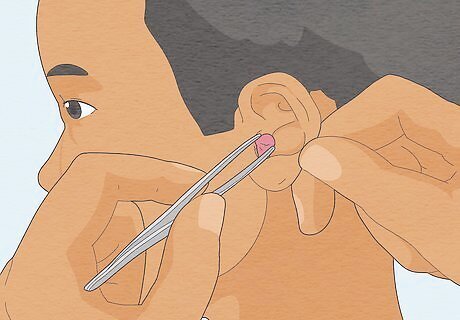
Remove the object with tweezers. Only use this method if part of the object is sticking out and you can easily remove it with a pair of tweezers. Clean a pair of tweezers with soap, then gently grasp the object in the ear. Go slowly and gently to prevent the object from breaking before it’s fully out of the ear. If the object is far enough inside of the ear that you can’t see it, do not use this method. Tweezers have the potential to push the object deeper inside of your ear canal, which can lead to injury. If you’re trying to remove something from a child’s ear and they won’t hold still, take them to a doctor instead. Moving around with tweezers inside of your ear is dangerous, and it could lead to a perforated eardrum.

Flush your ear out with water. Water can help flush out foreign objects, especially if they’re small. Wash your hands and fill up a bulb syringe with warm (not hot) water. Pull your ear up and back, then insert the syringe and gently squeeze water into your ear. Let the water run out of your ear onto a towel to flush out the foreign object. If you have an ear infection or believe you may have perforated your ear drum, do not use water to flush your ear. Instead, head to the doctor.
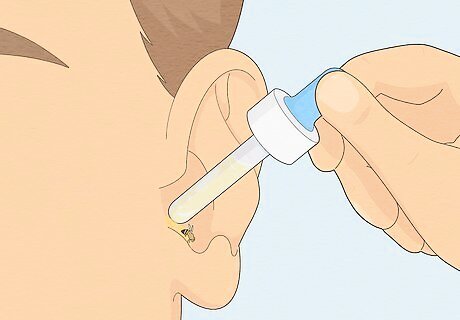
Apply baby oil or vegetable oil to kill insects. You can usually tell there’s a bug in your ear if you hear it buzzing or walking around. In that case, fill your ear canal with oil, and keep your head tilted so the oil doesn’t run out. Wait a couple of minutes until you can’t hear the insect move anymore, then tilt your head again to flush the insect out. If you’re struggling to get a bug out of your ear, warm the oil up in the microwave so it’s warm, but not hot. The heat from the oil will help kill the bug faster. Only use oil if you are attempting to remove an insect. If there has been pain, bleeding, or any discharges from the ear, it is possible that you have a perforated eardrum, and you should not use oils. See a doctor after using this method to make sure that all insect parts have been removed from the ear.
Seeking Medical Care
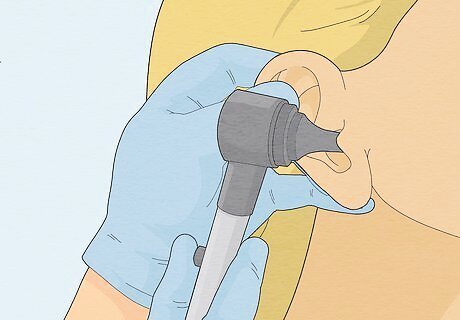
Get medical care if you can’t remove the object at home. You can make an appointment with your doctor, or you can head to the emergency room or urgent care. Let your medical professional know what the object is, what you’ve tried so far to remove it, and how long it’s been inside of your ear. Your doctor will likely use an otoscope tool to take a closer look inside your ear. If your ear is bleeding or extremely painful, don’t try to remove the object at home, and instead get medical attention right away.
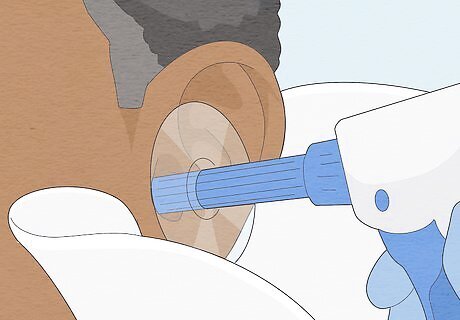
Let your doctor irrigate, use tweezers, or use a suction to remove the object. For most foreign objects in ears, your doctor will use water to flush it out. If that doesn’t work, they may use medical tweezers or a suction tool to pull the object out manually. These procedures typically don’t hurt, and they’re relatively quick. If the object is metal, your doctor can also use a long instrument that has been magnetized. This will make extraction much easier.
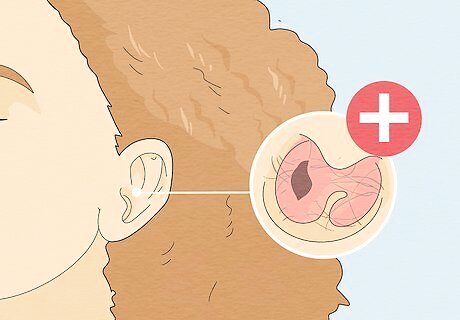
Follow your doctor’s instructions if you have a perforated eardrum. Occasionally, the eardrum might be punctured by a foreign object. If that’s the case, your eardrum will typically heal on its own within 2 months. However, your doctor might prescribe you antibiotics for infection, as well as give you instructions on how to clean the ear as it heals. Symptoms of a perforated eardrum include pain, discomfort, a feeling of fullness in the ear, dizziness, and fluid or blood draining from the ear.




















Comments
0 comment